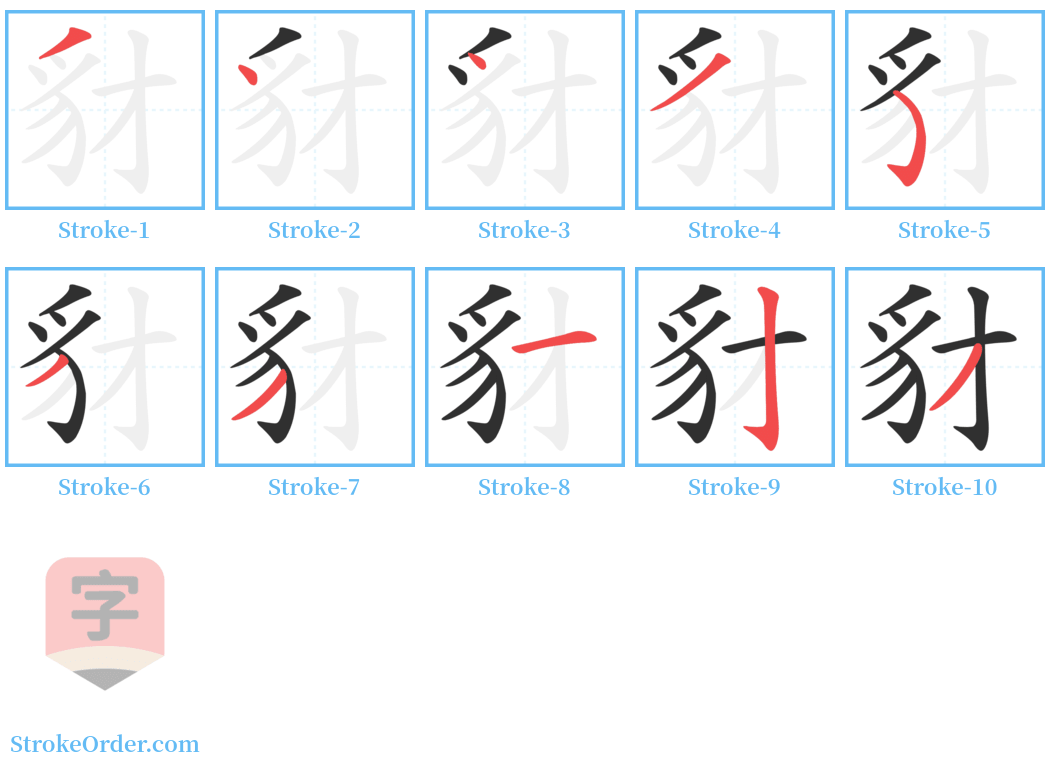豺 Stroke Order
Animated Stroke Order of 豺

Stroke Order Diagrams for 豺

Step-by-Step Handwriting Guide for 豺

Learn to Write Chinese Characters with Video Tutorials
Watch the video of writing the Chinese character "豺", learn the correct stroke order (笔顺) of the character "豺", and master the standard way of writing the character "豺".
Free Printable Handwriting Practice with Stroke Order: 豺
Printable Writing Practice Worksheet of "豺" in Portrait Orientation (Tian Zi Ge)

Printable Writing Practice Worksheet of "豺" in Landscape Orientation (Tian Zi Ge)

Information of 豺
Pinyin
chái
Radical
豸
Strokes
10 strokes
Usage
★★★★★
Definition
ravenous beast / wolves (collect.)
豺 [chái]
【名】
1. A mammal known for being gluttonous and violent; often attacks livestock in packs. It is found in China, Siberia (Russia), Indonesia, and other places. It is also called "wild dog."
2. A type of wild dog that is smaller than a wolf, with a more yellowish fur and less bravery than wolves. They sometimes hunt in packs at night but mostly hunt alone or in pairs. Their diet mainly consists of carrion or small animals (such as poultry).
【本义】
- A wild beast; resembles a dog but is as fierce as a wolf, commonly referred to as a wild dog.
【造字法】
- Phonetic-semantic compound: composed of the "豸" (zhì) radical indicating relation to wild beasts, and "才" for phonetic sound.
【引】
1. According to "Shuo Wen,"豺 belongs to the wolf family and is called a dog. The character can also be written as 犲.
2. As per "Er Ya," 豺 has the legs of a dog.
3. In "Cang Jie Pian," it states that 豺 resembles a dog, is white in color, and has claws. It is swift and adept at biting.
4. From "Lü Shi Chun Qiu," it is noted that 豺 is a sacrificial beast, resembling a dog but with long hair and a yellow color.
5. Mentioned in "Records of the Grand Historian," it refers to fighting 豺 wolves.
6. In "Comprehensive Mirror to Aid in Government," it describes Cao Gong as a 豺 tiger.
Input Method for 豺
Pinyin
chai2
Wubi
eeft|eftt
Cangjie
bhdh
Zhengma
pqdm
Four Corner
24200
Unicode
U+8c7a